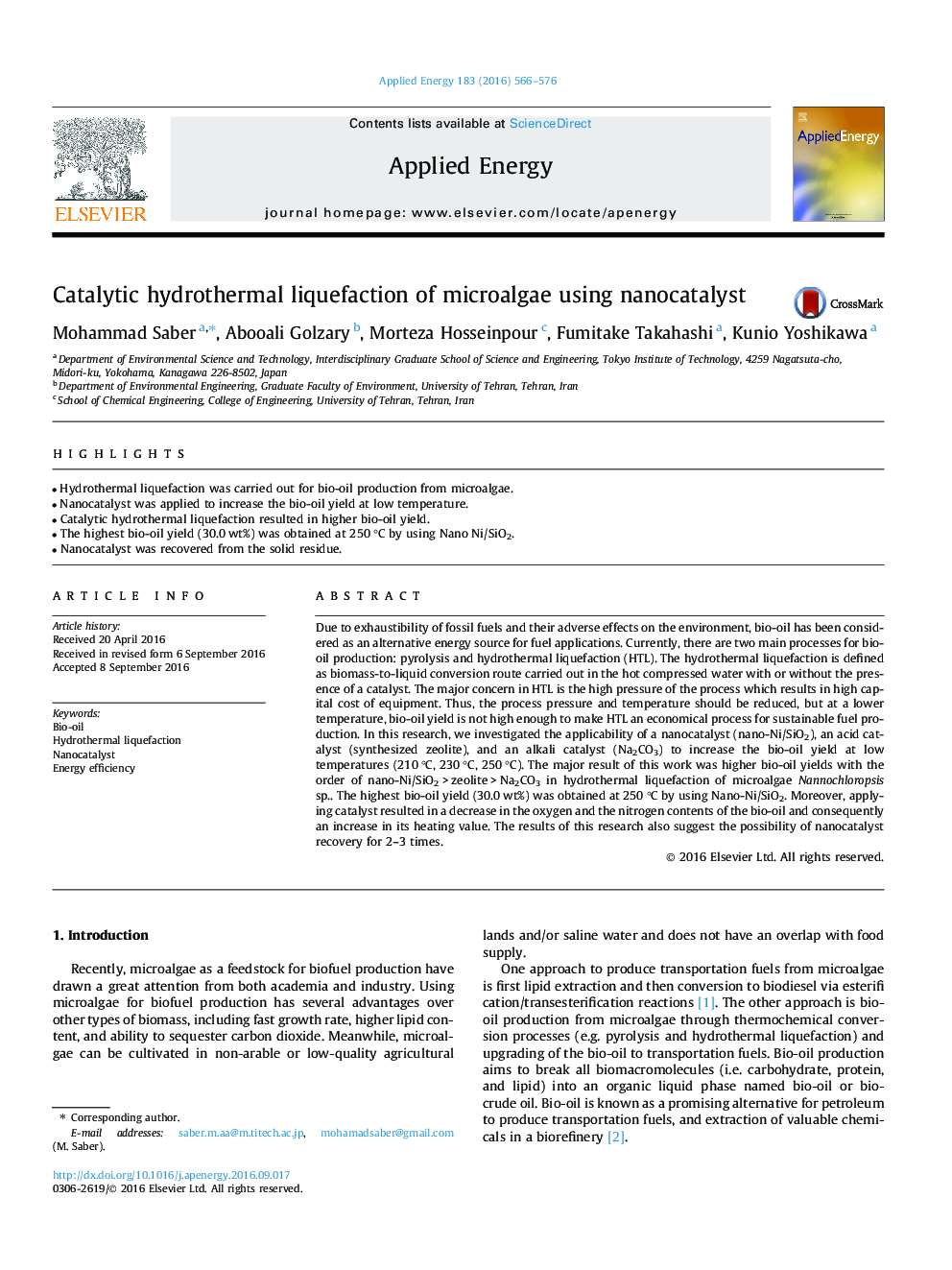| کد مقاله | کد نشریه | سال انتشار | مقاله انگلیسی | نسخه تمام متن |
|---|---|---|---|---|
| 4916598 | 1428105 | 2016 | 11 صفحه PDF | دانلود رایگان |
عنوان انگلیسی مقاله ISI
Catalytic hydrothermal liquefaction of microalgae using nanocatalyst
ترجمه فارسی عنوان
مایع سازی هیدروترمال کاتالیستی از میکروالگوها با استفاده از نانوکاتالیزور
دانلود مقاله + سفارش ترجمه
دانلود مقاله ISI انگلیسی
رایگان برای ایرانیان
کلمات کلیدی
روغن زیتون، مایع سازی هیدروترمال نانوکاتالیست، بهره وری انرژی،
موضوعات مرتبط
مهندسی و علوم پایه
مهندسی انرژی
مهندسی انرژی و فناوری های برق
چکیده انگلیسی
Due to exhaustibility of fossil fuels and their adverse effects on the environment, bio-oil has been considered as an alternative energy source for fuel applications. Currently, there are two main processes for bio-oil production: pyrolysis and hydrothermal liquefaction (HTL). The hydrothermal liquefaction is defined as biomass-to-liquid conversion route carried out in the hot compressed water with or without the presence of a catalyst. The major concern in HTL is the high pressure of the process which results in high capital cost of equipment. Thus, the process pressure and temperature should be reduced, but at a lower temperature, bio-oil yield is not high enough to make HTL an economical process for sustainable fuel production. In this research, we investigated the applicability of a nanocatalyst (nano-Ni/SiO2), an acid catalyst (synthesized zeolite), and an alkali catalyst (Na2CO3) to increase the bio-oil yield at low temperatures (210 °C, 230 °C, 250 °C). The major result of this work was higher bio-oil yields with the order of nano-Ni/SiO2 > zeolite > Na2CO3 in hydrothermal liquefaction of microalgae Nannochloropsis sp.. The highest bio-oil yield (30.0 wt%) was obtained at 250 °C by using Nano-Ni/SiO2. Moreover, applying catalyst resulted in a decrease in the oxygen and the nitrogen contents of the bio-oil and consequently an increase in its heating value. The results of this research also suggest the possibility of nanocatalyst recovery for 2-3 times.
ناشر
Database: Elsevier - ScienceDirect (ساینس دایرکت)
Journal: Applied Energy - Volume 183, 1 December 2016, Pages 566-576
Journal: Applied Energy - Volume 183, 1 December 2016, Pages 566-576
نویسندگان
Mohammad Saber, Abooali Golzary, Morteza Hosseinpour, Fumitake Takahashi, Kunio Yoshikawa,
